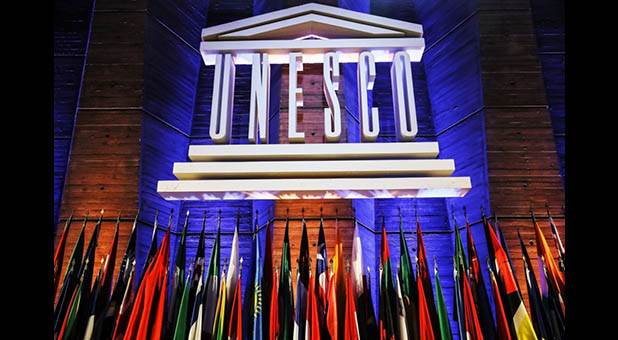UNESCO: The Cave of the Patriarchs Belongs to the Palestinians
Bit by bit, the United Nations Educational, Scientific and Cultural Organization’s World Heritage Committee (UNESCo) is erasing the Judeo-Christian origins of the Middle East.
The latest attack came Friday morning, when the committee voted 12-3, with six abstentions, to declare Hebron’s Cave of the Patriarchs as an “endangered Palestinian heritage site.” The vote was sought from the Palestinian Authority through several of the committee’s many Muslim-majority members.
Also known as the Tomb of the Patriarchs, the cave is identified in the Bible as the burial site of Abraham and Sarah, Isaac and Rebecca and Jacob and Leah. Some Orthodox Jews also consider it the burial place of Adam and Eve.
But, to Muslims, it is referred to as Ibrahimi Mosque or the Sanctuary of Abraham. It is located in Hebron’s Old City in the Judean Mountains. That area is considered “occupied” Palestinian lands by the UN after it was won by Israel during the Six Day War.
Israeli Ambassador to the United Nations Danny Danon blasted the decision:
“UNESCO’s attempt to sever the ties between Israel and Hebron is shameful and offensive. This is an ugly display of discrimination and an act of aggression against the Jewish people. No UN agency can disassociate our people from the burial grounds of our patriarchs and matriarchs.”
Ironically, despite declaring it a Palestinian heritage site, the World Heritage Committee’s inscription recognizes its importance to Christians and Jews, as well:
The use of a local limestone shaped the construction of the old town of Hebron / Al-Khalil during the Mamluk period between 1250 and 1517. The center of interest of the town was the site of Al mosque -Ibrahim / the tomb of the Patriarchs whose buildings are in a compound built in the 1st century CE to protect the tombs of the patriarch Abraham / Ibrahim and his family. This place became a site of pilgrimage for the three monotheistic religions: Judaism, Christianity and Islam. The town was sited at the crossroads of trade routes for caravans travelling between southern Palestine, Sinai, Eastern Jordan and the north of the Arabian Peninsula. Although the subsequent Ottoman Period (1517-1917) heralded an extension of the town to the surrounding areas and brought numerous architectural additions, particularly the raising of the roof level of houses to provide more upper stories, the overall Mamluk morphology of the town is seen to have persisted with its hierarchy of areas, quarters based on ethnic, religious or professional groupings and houses with groups of rooms organized according to a tree-shaped system.
The cave is beneath what was originally a Jewish structure built during the rein of King Herod roughly 2,000 years ago. Following the Muslim conquest of Israel, Saladin converted the structure into a mosque. It is the oldest continuously used intact prayer site in the world. {eoa}















































